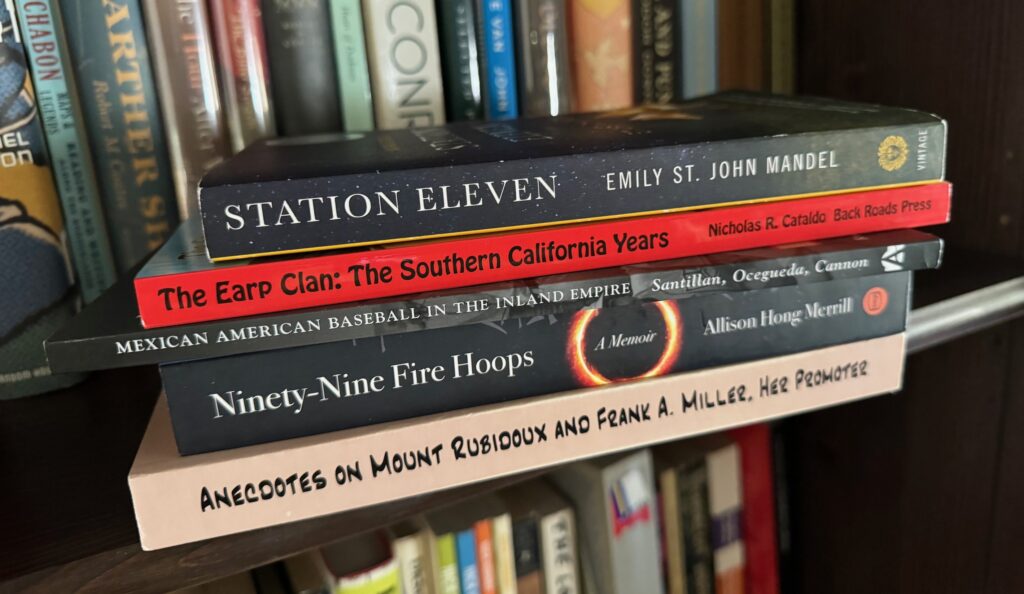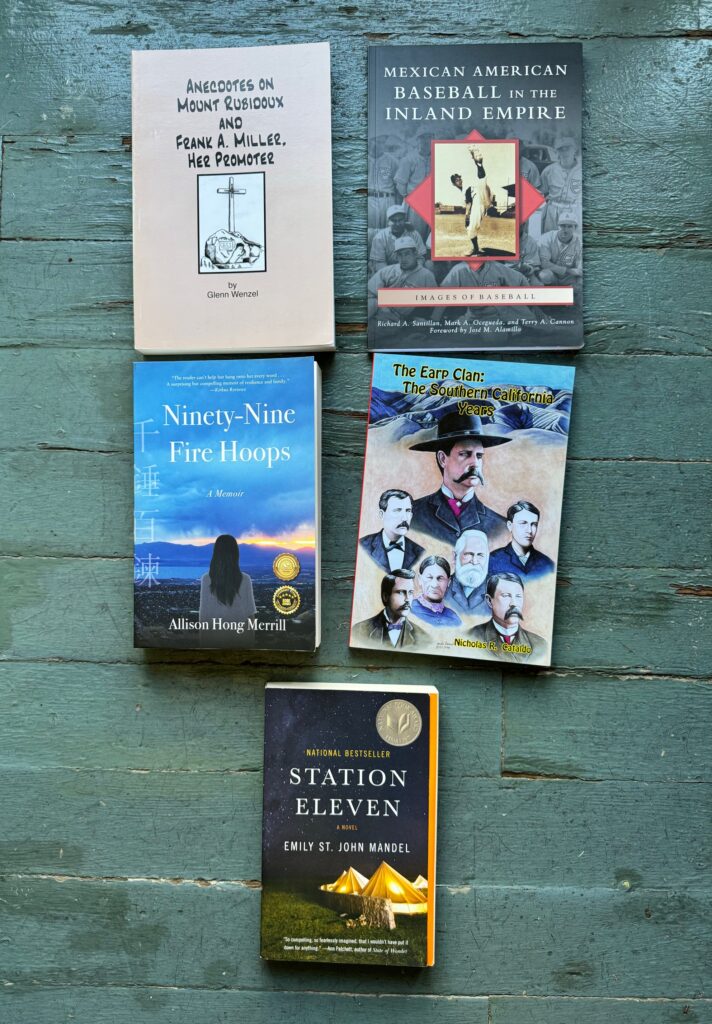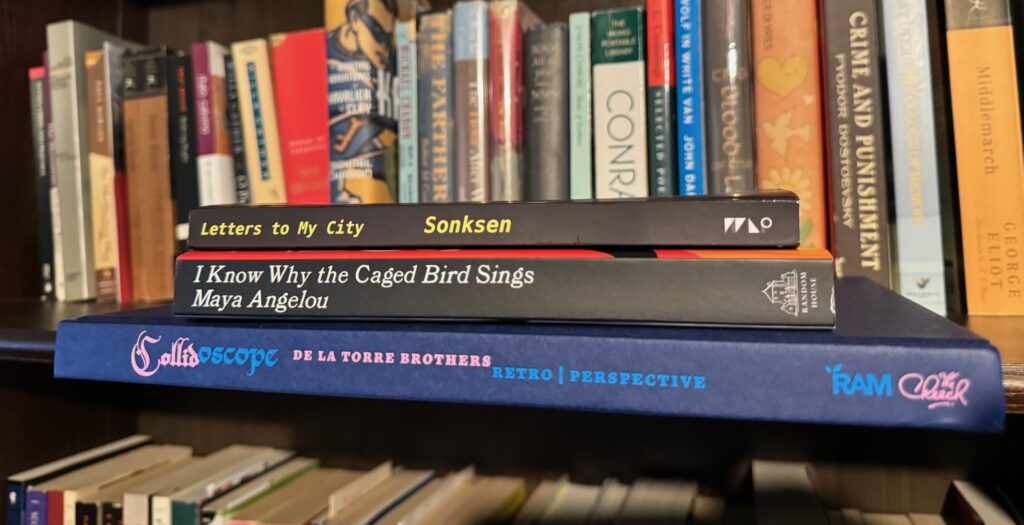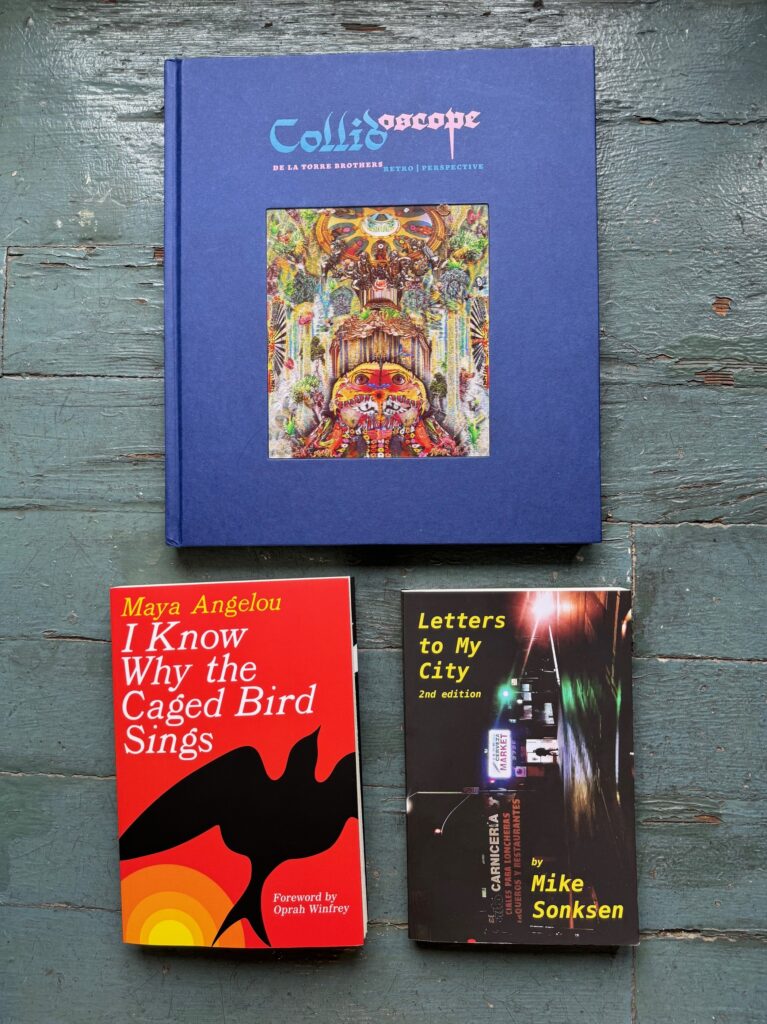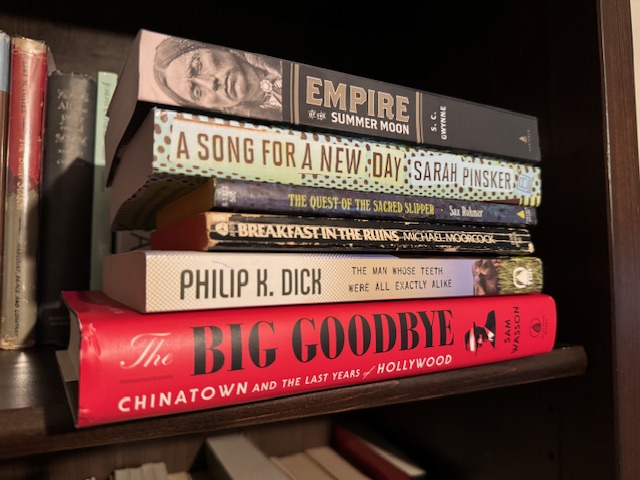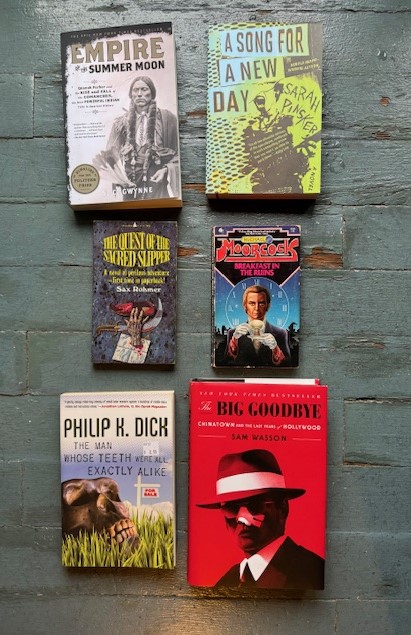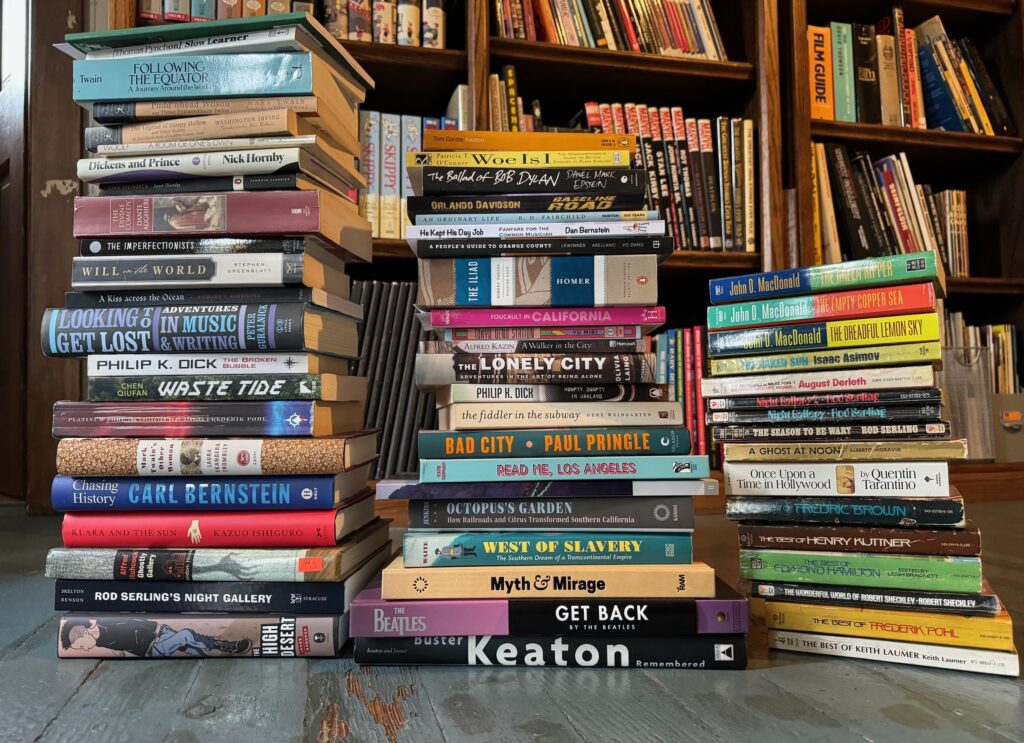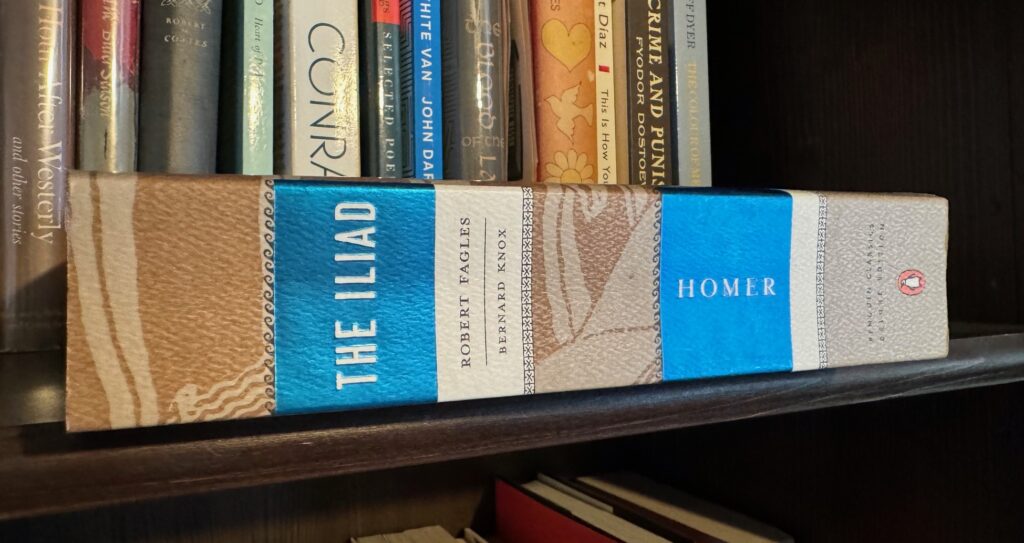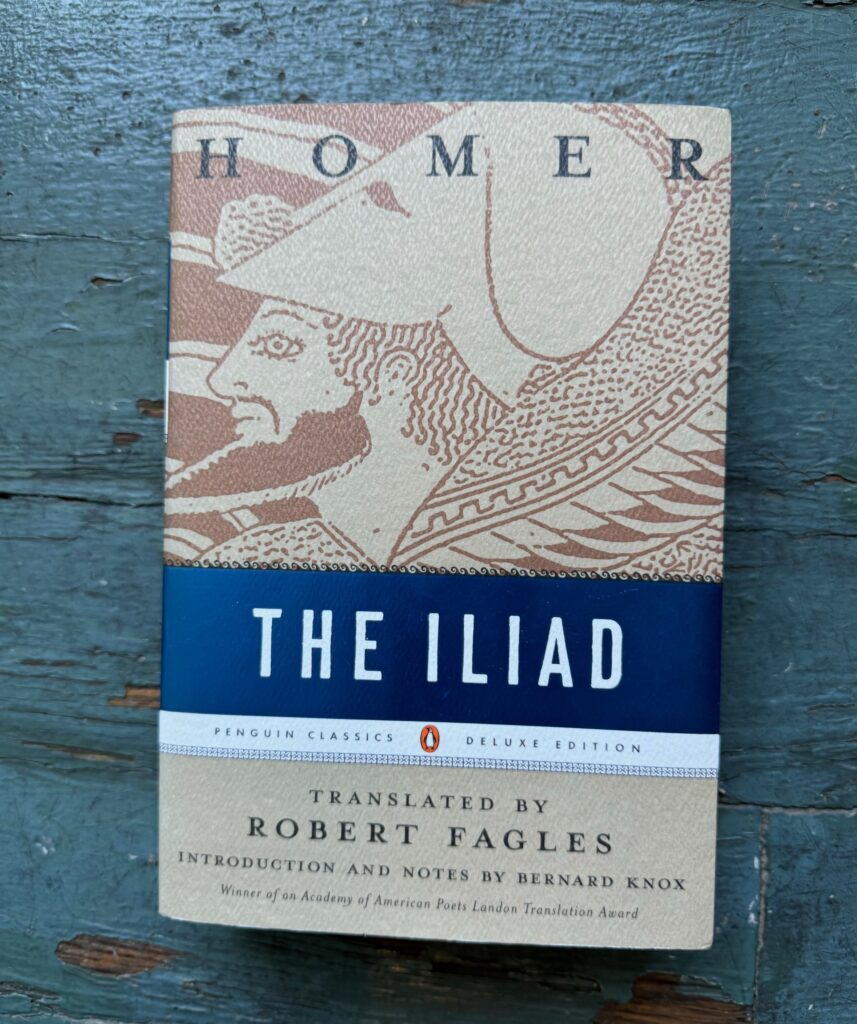Books acquired: “Perris, California,” Rachel Stark; “Jelly Roll Blues: Censored Songs and Hidden Histories,” Elijah Wald; “Dune,” Frank Herbert
Books read: “The Odyssey,” Homer; “Conversations with Jonathan Lethem,” Jaime Clarke, editor; “Inland Empire and San Gabriel Valley Movie Theatres,” Kelli Shapiro; “The Harris Company,” Aimmee L. Rodriguez and Richard & Robin Hanks; “Forager: Field Notes for Surviving a Family Cult,” Michelle Dowd
It’s been a while, hasn’t it? Since April 1, to be exact. Not sure when or if the Reading Log has ever been delayed until the 11th of the month, but as noted this blog fell into a sort of coma and needed IT to revive it.
It wasn’t serious, once the right person was found to handle it. Still, the pause felt like a health scare, a sort of wake-up call. In response, this blog promises to eat right and exercise more, right after finishing these snacks.
Here’s what I (dimly recall having) read in April: one epic poem, two Inland Empire history books, a collection of interviews by an author and a memoir.
“The Odyssey” (possibly 8th century B.C.): Whereas The Iliad, read last December, is nothing but fighting, The Odyssey is a soldier’s journey home. It’s got a lot of famous, imaginative bits: the Trojan horse, Scylla and Charybdis, the Cyclops, the Sirens, the contest to shoot an arrow through the hooks on 12 axes, the delaying tactic of each night unraveling the day’s cloth weave. Some of the emotional territory is surprising, even remarkable, particularly Penelope’s slowness to recognize and embrace Odysseus upon his return after 20 years. Homer, he’s all right. I see bright things ahead for this promising young talent. (Bought in 2009 at San Luis Obispo’s Phoenix Books.)
“Conversations with Jonathan Lethem” (2011): The existence of these “conversations” books is kind of a wonder, and they have their pleasures. They also have their frustrations: The same ground is covered in interview after interview, and some of the interrogators are easy to lose patience with. Regardless, Lethem’s responses are thoughtful, intelligent and offhandedly witty. Although the most recent conversation is from 2010, this is still useful for admirers. Also, the story of his onetime California vanity plate (SQUALOR) is a scream. Note: Yours truly has himself had conversations with Jonathan Lethem, who moved to Claremont around the time this book was published. He’s thoughtful, intelligent and offhandedly witty, and also a nice fellow. (Bought in 2012 at Boyle Heights’ Libros Schmibros.)
“Inland Empire and San Gabriel Valley Movie Theatres” (2024): Behind this ultra-descriptive title lie photos of, well, Inland Empire and San Gabriel Valley movie theatres of the past. They were compiled with what must have been a fair amount of sleuthing, along with basic details on each venue’s life and times, all arranged in the usual rigid but get-‘er-done Arcadia format. Only a few of these theaters still operate and most are no longer standing. If you’re interested in (see title), as I am, this was put together with you in mind. (Received from the publisher in March.)
“Harris Company” (2008): As with the other heavily formatted Images of America books, this is history as told through pictures and captions, and the photos, usually documentary or promotional in nature, are often very dull indeed. Still, this slender book does its best, even in fragmented form, to tell the story of the Inland Empire’s premier department store (RIP). The introduction, as short as it is, provides a good overview of the central role Harris’ played in local lives in the era when people would dress up to spend a day there. (Bought in April at the History Day event in San Bernardino.)
“Forager” (2023): In some ways, this memoir feels sketchy and incomplete; hard details on The Field are there, but scattered about. This is more about what the young Dowd experienced and recalls from her childhood in a Christian cult started by her grandfather, who believed he was a modern-day prophet who would live to 500. Well, it can’t help but be interesting, right? Dowd is skillful enough to get out of the way of her story. But it’s not entirely satisfying. Note: She’s a Chaffey College professor of my acquaintance and subject of a recent column of mine. (Bought at a B&N in April.)
Not a bad month. The Harris and theaters books were read for professional purposes, notes taken, in bed before slumber (few books are simpler to put down than a book of captioned photos). Homer and Dowd were largely consumed as audiobooks, with reference to the text. Dowd read her book. Homer, needless to say, did not, but Ian McKellen (!) filled in admirably.
Also, the Lethem interviews book was skimmed, skipping here and there. I read enough of it to count it. Same in March with “Ninety-Nine Fire Hoops,” a fact I neglected to point out at the time. I did not read enough of “Monogram,” same month, to count it, having read 40 pages and abandoned it. Until “Conversations” and “Hoops,” no book here had ever not been read word for word, to my recollection. It was a judgment call to conclude that the book did not need to be read in full to feel as if I’d read it and to render an opinion.
Ehh, I’m 60 now, you know? Life is short and it’s past time to lighten up.
I abandoned another book in March and didn’t make note of it. “The Big Book of Adventure Stories” (Otto Penzler, editor) was bought in 2011 at a Borders during the closeout sale. It’s nearly 1,000 pages of pulp stories of an adventurous turn. A paragraph or two into the first, rather musty story, I realized this was not one I wanted to read, and that the book was not what I’d wished it was.
My hope had been that these would be men’s-sweat stories of explorers in pith helmets falling into quicksand and brigands smeared with honey and tied to anthills. But these were, while not necessarily literary, for pulp-magazine scholars. So I read about 100 pages of stories by writers whose names I recognized and was curious about, like Clark Ashton Smith and Cornel Woolrich, then let it go.
I’ve still got one very long pre-pandemic purchase to read, “Middlemarch,” but dropping this literal “Big Book” was a relief.
OK, enough from me. How was your April, readers? That is, if you remember. Let us know in the comments, please.
Next month: fiction, science and otherwise, in pocket paperback form.



